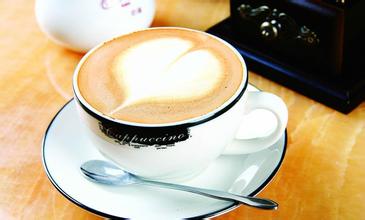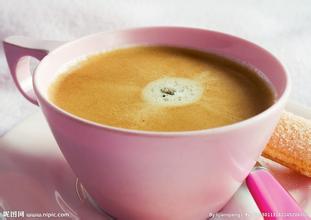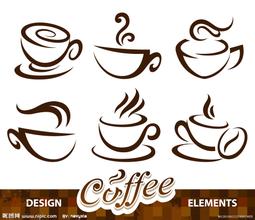What are the ways to make coffee 3D cat coffee flower drawing
Filter paper brewing-- the easiest way to brew
The simplest way to make coffee. The filter paper can be discarded immediately after being used once, which is more sanitary and easy to clean up. The amount of boiled water and the method of injection can also be adjusted. One person can also brew, which is the best way to brew a small number of people. The focus of brewing coffee is similar to that of cloth bag brewing, choosing coffee beans that have been roasted for a long time to grind into powder and brew out the ingredients in the coffee in five minutes. If you like to drink lighter coffee, the amount of coffee beans can be slightly increased, but the particles need to be ground larger, and the brewing time needs to be shortened. Filter paper should be used with filters, which are usually made of plastic and pottery, but if you want to maintain the temperature of boiling water, it is better to use plastic, which is less likely to conduct heat than ceramic. The filter and filter paper can be made in different sizes according to the amount of coffee brewed.
[about apparatus]
The drip can be divided into two holes and three holes. If you use the three-hole style here, you will have it for two or three hundred yuan. Then if you want to have filter paper, you can have it in the supermarket, just a few dozen yuan. The spout for injecting boiled water should be small enough to make the boiling water pour vertically on the coffee powder, which is more appropriate.
[key points of brewing]
Coffee powder per person is about 10-12 grams and boiled water is 120 cc.
People who like light coffee can brew it with a powder amount of about eight grams per person.
For those who like bitter taste, the amount of flour can be 12 grams per person, fully steamed and then slowly injected with boiling water.
The kettle used for hot water injection is easier to operate if it is injected for about seven or eight minutes, while the amount of boiling water is prepared according to the number of people. You can measure the beaker while dripping the required amount of coffee liquid.
Do not drop the filtered extract to the last drop, and stop in the residual state (if all the drops may have smells or impurities, etc.).
Heat the beaker without boiling it and pour it into the coffee cup.
This approach, like syphon, is technologically important. At first, the coffee may be very sour, because in addition to poor control of water output, the quality of the coffee itself (freshness... etc) and particle size are also important factors.
[brewing method]
Brewing
Brewing
1. The next part of the filter paper is folded along the seam and placed in the drip.
two。 With a measuring spoon, pour several portions of the coffee powder (about 10 ~ 12g per person) into the drip and tap a few more times before the surface becomes flat.
3. After boiling the river water in a teapot, pour it into a small-nozzle kettle, gently inject boiled water (the water temperature is about 95 degrees) from the central point, and slowly start to spiral the boiling water into the kettle.
Until it's covered with powdered coffee. Be sure to pour it in slowly.
4. Extract the delicious ingredients and steam the expanded coffee powder (stay for about 20 seconds).
5. The second time the boiling water is injected slowly from the surface of the coffee powder. The amount of water injected must be consistent with the amount of coffee liquid extracted, and the boiling water of the filter paper must be kept at a certain level.
6. The extraction liquid can be stopped as soon as it reaches the number of people, and the state of boiling water left in the filter paper will be discarded.
reminder
If you want to collect this article for future use, you do not have to copy it up. As long as you [register] as a free member of this site, you can use the personal favorites function of this site to collect this article. In the future, as long as you log on to this site, you can call your favorite articles directly from your personal favorites!

Important Notice :
前街咖啡 FrontStreet Coffee has moved to new addredd:
FrontStreet Coffee Address: 315,Donghua East Road,GuangZhou
Tel:020 38364473
- Prev

What are the characteristics of Manning coffee? the origin of breakfast mixed coffee
Manning Coffee is produced in Sumatra, Indonesia, Asia, also known as Sumatran Coffee. The main producing areas are Java, Sulawesi and Sumatra, 90% of which are Robusta species. Among them, Mantenin, produced in Sumatra, is the most famous. Exquisite traditional Arabica from Sumatra, northern Sumatra
- Next

Coffee heat preservation and preservation filter paper brewing grinding method: medium and fine
Heat preservation and preservation of coffee to maintain the temperature of coffee, you can first heat the cup and plate of coffee, drink coffee can soak the coffee pot in hot water to keep warm, and boil it in boiling water to ensure that the coffee is at its best. If the coffee pot is heated directly on the gas stove, be careful not to boil. Once the coffee is boiled, some ingredients will change chemically, and the sour taste will become stronger and damage the original.
Related
- Does Rose Summer choose Blue, Green or Red? Detailed explanation of Rose Summer Coffee plots and Classification in Panamanian Jade Manor
- What is the difference between the origin, producing area, processing plant, cooperative and manor of coffee beans?
- How fine does the espresso powder fit? how to grind the espresso?
- Sca coffee roasting degree color card coffee roasting degree 8 roasting color values what do you mean?
- The practice of lattes: how to make lattes at home
- Introduction to Indonesian Fine Coffee beans-- Java Coffee producing area of Indonesian Arabica Coffee
- How much will the flavor of light and medium roasted rose summer be expressed? What baking level is rose summer suitable for?
- Introduction to the characteristics of washing, sun-drying or wet-planing coffee commonly used in Mantenin, Indonesia
- Price characteristics of Arabica Coffee Bean Starbucks introduction to Manning Coffee Bean Taste producing area Variety Manor
- What is the authentic Yega flavor? What are the flavor characteristics of the really excellent Yejasuffi coffee beans?

